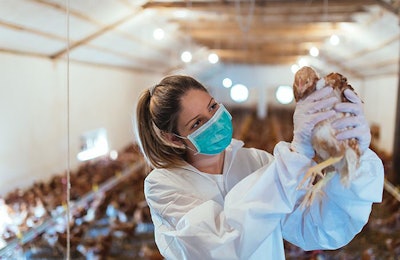
The latest European Symposium on Poultry Nutrition, held in Poland in June, featured a lot of research into animal feed additives.
A quick glance at the back cover of the 2019 European Symposium on Poultry Nutrition (ESPN) book of proceedings can gives a very clear idea about the focus of research that was to be presented at the event. The majority, if not all, of the sponsors are in the additives business.
There is nothing wrong with that; if anything, it shows additives remains a profitable business. But it would be nice to have a more balanced sponsorship as nutrition is not just additives, and there are other significant segments of the industry that benefit equally from the feeding of poultry worldwide.
Out of the 10 pages full of research abstract titles, almost seven pages were devoted to research regarding additives. Again, there’s nothing wrong with that, but it gives the wrong impression, especially to young nutrition professionals, who must acquire a more comprehensive understanding of what nutrition is about. Perhaps it is not that research on additives actually dominates nutrition research in poultry, but that this is the only type of research that is being published. As it happens, other nutrition research is conducted by the poultry industry, but it remains proprietary information as these entities have no interest in advertising or even validating their findings to a wide audience. This begs the question, then, whether published research on additives should be classified as marketing.
Enzymes
Surprisingly, there were several research reports that focused on enzymes, despite the fact that feedstuff prices appear to range around the expected normal. There remains a strong interest on enzymes for cereals, and especially in combination with other additives. Less focus was placed on proteases, perhaps because there is a limited number of available products on the market, and/or their effect on existing protein sources appears to be less than expected. Finally, and this was a big surprise, the interest on the enzyme phytase continues unabated. This is perhaps explained by the conviction of the ESPN parent organization, World’s Poultry Science Association, that phosphorus supplies are shrinking worldwide. In fact, there is a whole division of scientists from this organization focusing on fine-tuning phosphorus requirements and evaluation procedures. This at first appears somewhat odd especially because there was a plethora of research on phytase in times past, and also because non-rock phosphate sources are not discussed seriously. If anything, it proves that investing in phytase production and marketing will continue to be a viable business, at least for the near future. And, to close the section on enzymes, here is something relatively new: muramidase. I will let you look this one up because I think it is worth at least reading about it.
Protein sources
ESPN remains a European event, and as such it has to focus on one of Europe’s big deficits: protein. This was addressed during a plenary session with three very interesting lectures, but it was also reflected in numerous research abstracts. The scope of research was sufficiently wide ranging, from reducing crude protein in poultry diets (benefiting the use of feed-grade amino acids) to replacing imported soybean protein with local protein coming from fava beans or rapeseed, for example. The latter source appears to be the protein of choice as the European Union has decided to use rapeseed oil as a biofuel, leaving thus its byproduct as a protein source for animals. This is a big discussion that will be addressed in another issue, but the conclusion remains that Europe continues protein deficient and opportunities abound for new additives, new cultivars and even new uses of old ingredients, such as linseed.
Gut health
This was the most unimpressive section, at least for those of us who have been involved in replacing antibiotics with anything imaginable even before the EU decided they had to be banned. As it was to be expected, the usual suspects (additives) were tested again and again, but at least this time, one pleasant surprise was that scientists finally grasped what the industry has long been practicing: the combined use of several additives to complement each other. Lamentably, this combination increases feed cost, but remains the only real solution as no single additive can replace antibiotics for any purpose. It is good to see research on combinations, and although mostly positive results were shown, it is still in the right direction for future research.
Sustainability
There was a whole section on sustainability, but I must declare this was the most confusing segment of the whole event. Everyone has a different notion of what sustainability means, and everyone wants to be on the “right” side of sustainability – even though there is no right or wrong definition of the term. Again, additives dominated this section, but it was an interesting exercise in how consumerism, politics and marketing affect research. In my view, sustainability was interpreted as improved efficiency through animal performance, which is a very narrow, although highly commercial, definition of the term. Perhaps it will be during the next ESPN where sustainability will encompass the challenges proposed by modern politicians, such as those who advocate the breakup of mega-farms, or even the end of factory farming; that is, after someone explains to us what factory farming really means.
Overview
The 2019 ESPN was an interesting event that, despite being lopsided, was not disappointing. Perhaps it was too commercial for some or not innovative enough for others, but research requires funding, and having followed research for 30 years, I can say that a mix of public and private funding may be what is required to represent the real interests of all parties involved.














